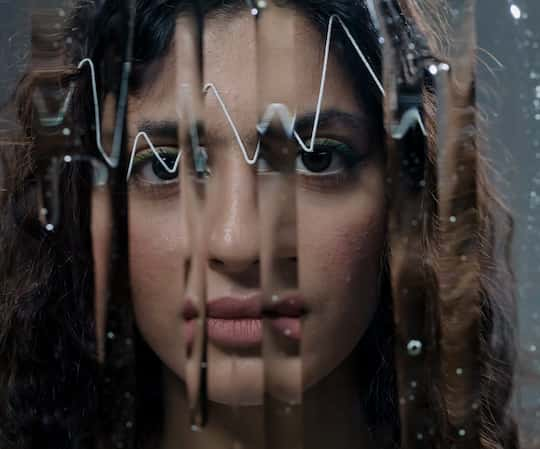Synaesthesia is a fascinating neurological phenomenon where the senses intertwine, creating unique sensory experiences.
What is synaesthesia?
Synaesthesia is a condition where one sense involuntarily triggers another, such as seeing colours when hearing music or tasting flavours when reading words.
While rare, it provides a window into the complexities of human perception and the interconnectedness of sensory pathways.
Key features of synaesthesia
- Consistent associations: The connections are stable over time, such as always seeing red when hearing a specific note.
- Involuntary responses: The sensations occur automatically without conscious effort.
- Unique to individuals: Each person experiences synaesthesia differently.
Common types of synaesthesia
Grapheme-colour synaesthesia
Individuals with this type see specific colours associated with letters, numbers, or characters. For instance, the letter “A” might always appear red, while “B” appears blue.
Sound-colour synaesthesia (chromesthesia)
This type causes individuals to perceive colours in response to sounds. Music notes, voices, or everyday noises may evoke vivid hues and patterns.
Lexical-gustatory synaesthesia
Words or sounds trigger tastes, such as experiencing a chocolate flavour when hearing the name “Lucy.” This rare type adds a taste dimension to auditory stimuli.
Mirror-touch synaesthesia
People with this type feel sensations on their own body when observing others being touched. For example, seeing someone touched on their arm may create the same sensation on their own arm.
Spatial sequence synaesthesia
This involves associating sequences like days of the week or numbers with specific spatial arrangements. A person might visualise months as a circular clock-like shape.
Such spatial patterns can influence how individuals perceive time and organise their schedules.
Less common types of synaesthesia
Ordinal linguistic personification
This type assigns personality traits to letters, numbers, or objects. For example, the number “7” might feel particularly kind or mischievous.
Such associations can create a rich, narrative-like understanding of abstract concepts.
Auditory-tactile synaesthesia
Sounds trigger tactile sensations on the skin, such as feeling vibrations on the fingertips when hearing a violin.
Individuals with this type often describe it as an added layer to their sensory experience of music or environmental sounds.
Ticker-tape synaesthesia
Individuals experience a visual stream of written text when hearing speech, similar to subtitles running across their visual field.
This can sometimes aid in understanding spoken words, particularly in noisy environments.
Mechanisms and causes of synaesthesia
Researchers believe synaesthesia arises from increased connectivity in the brain, particularly between sensory regions.
Genetic factors may play a role, as synaesthesia often runs in families.
It is not considered a disorder but a variation of sensory perception, offering unique insights into brain function.
The role of brain plasticity
Studies suggest that synaesthetic brains may have more flexible neural pathways, allowing for cross-communication between sensory areas.
This plasticity may explain why synaesthetic experiences often begin in childhood and remain consistent throughout life.
Synaesthesia and creativity
Influence on art and music
Synaesthesia has inspired numerous artists, musicians, and writers. Kandinsky, a famous painter, and Liszt, a renowned composer, are thought to have experienced synaesthetic perceptions.
- Painters may translate sound into visual art, creating colourful, abstract pieces.
- Musicians might compose pieces that reflect the “colours” they perceive in melodies.
Impact on memory
Many synaesthetes report enhanced memory abilities. The multisensory experiences can provide additional cues, making it easier to recall information.
For example, a person who associates numbers with colours might find it simpler to memorise complex numerical data.
Cultural and historical perspectives
Historical accounts
References to synaesthesia date back centuries. Early medical literature described individuals experiencing mixed senses, though the phenomenon was not well understood.
Philosophers and scientists have debated its nature, with some considering it a rare curiosity and others seeing it as a key to unlocking human perception.
Cultural interpretations
In some cultures, synaesthetic experiences have spiritual or mystical significance. They may be associated with heightened intuition or artistic talent.
Modern interpretations often view synaesthesia as a unique neurological condition, bridging the gap between science and art.
Living with synaesthesia
Daily experiences
Synaesthetes often describe their condition as enriching their lives, offering unique perspectives on the world.
However, it can sometimes feel overwhelming, especially in environments with intense sensory stimuli.
For example, crowded spaces with loud music and bright lights might become overstimulating.
Embracing synaesthesia
Many individuals use their experiences creatively, incorporating them into artistic or professional work.
Some synaesthetes also find community and understanding through online forums and research events.
Debunking myths about synaesthesia
Despite its fascinating nature, synaesthesia is often misunderstood.
- It is not a mental illness but a neurological condition.
- Not all synaesthetes are highly creative or artistic.
- It is not something that can be “switched on” voluntarily.
Raising awareness about synaesthesia can help dispel these myths and encourage greater appreciation of its diversity.
Future directions and research
Research continues to uncover new aspects of synaesthesia, from its genetic underpinnings to its role in cognitive processes.
Scientists are also exploring applications of synaesthetic principles in technology, such as multisensory interfaces and educational tools.
For instance, virtual reality environments could integrate synaesthetic-inspired elements to enhance learning and creativity.
As understanding grows, synaesthesia offers a fascinating glimpse into the brain’s complexity and the richness of human perception.

